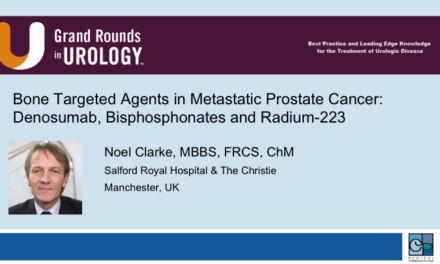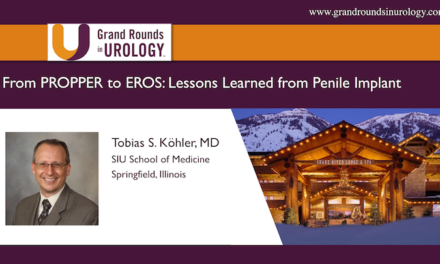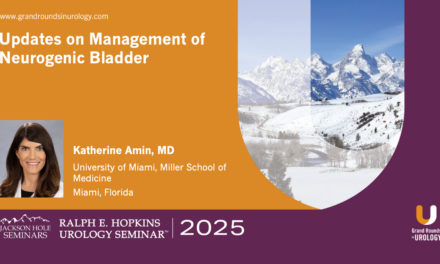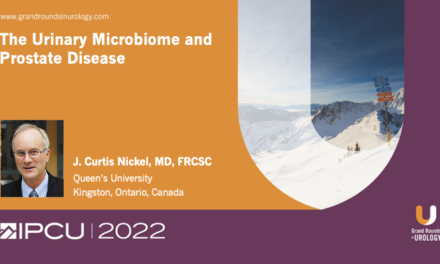Manoj J. Monga, MD, FACS, presented “Asymptomatic Stones: Treat or Observe?” during the 29th Annual Perspectives in Urology: Point-Counterpoint, on November 18, 2021, in Coronado Island, San Diego, California.
How to cite: Monga, Manoj J. “Asymptomatic Stones: Treat or Observe?” November 18, 2021. Accessed Nov 2025. https://grandroundsinurology.com/asymptomatic-stones-treat-or-observe/
Asymptomatic Stones: Treat or Observe?
Manoj J. Monga, MD, FACS, Professor and Chair of Urology at the University of California, San Diego, suggests a situational approach to asymptomatic renal stone treatment based on outcomes data. Dr. Monga explains that asymptomatic renal stones are very common and are diagnosed in some 2 million patients per year. He notes that asymptomatic stones cause significant psychological distress in patients, and in fact tend to worry more than other stone patients. Dr. Monga also clarifies that asymptomatic stones often do not remain asymptomatic, citing data published in the Journal of Endourology showing that 26% of patients ultimately require intervention, 48% experience pain, 55% experience stone growth, and 77% experience any of the previously stated outcomes within 4 years of an asymptomatic stone being identified. He then shows that risk can be further stratified based on stone size and location, explaining that a stone in the renal pelvis is guaranteed to progress while a small upper pole stone is more likely to pass. Dr. Monga states that in most cases asymptomatic stone patients should be treated. He then summarizes the different treatments available for renal stones, observing that patients tend to select the less-invasive shockwave treatment over ureteroscopy even though it is less effective. He states that shockwave treatment’s efficacy varies based on the location and size of the stone, and that this should be discussed with patients. Dr. Monga concludes that stones less than 4mm should be observed and those between 4mm and 10mm should undergo shockwave treatment, while larger stones may require ureteroscopy.
About the 29th Annual Perspectives in Urology: Point Counterpoint conference:
Presented by Program Chair and Grand Rounds in Urology Editor-in-Chief E. David Crawford, MD, this conference brought together leading experts in urology, medical oncology, and radiation oncology to discuss and debate the latest topics in genitourinary cancers, primarily prostate cancer and bladder cancer. This interactive conference offered topical lectures, pro/con debates, interesting-case presentations, interactive panel discussions, and interactive audience and faculty networking.
ABOUT THE AUTHOR
Manoj J. Monga, MD, FACS, FRCS, is a Professor and the Chair of the Department of Urology at the University of California, San Diego, where he oversees the department’s research, teaching, and clinical care. He is recognized as an international authority in endourology (minimally invasive urologic surgery) and kidney stone disease. His clinical expertise includes kidney stone prevention, medical and surgical management of kidney stone disease, and endoscopic management of upper tract transitional cell cancer and benign strictures.





